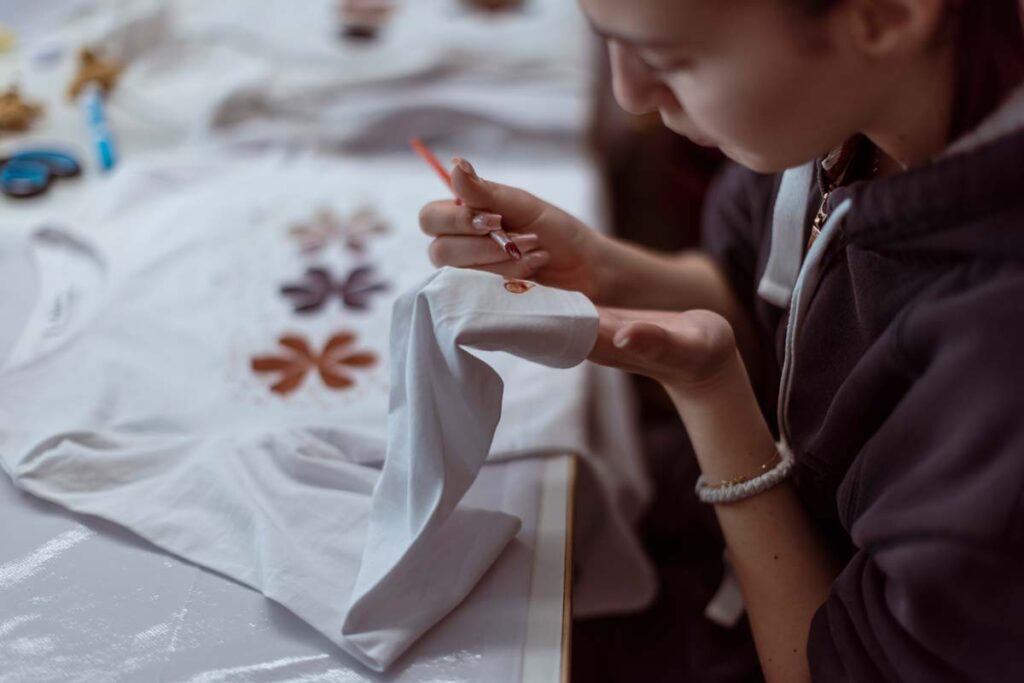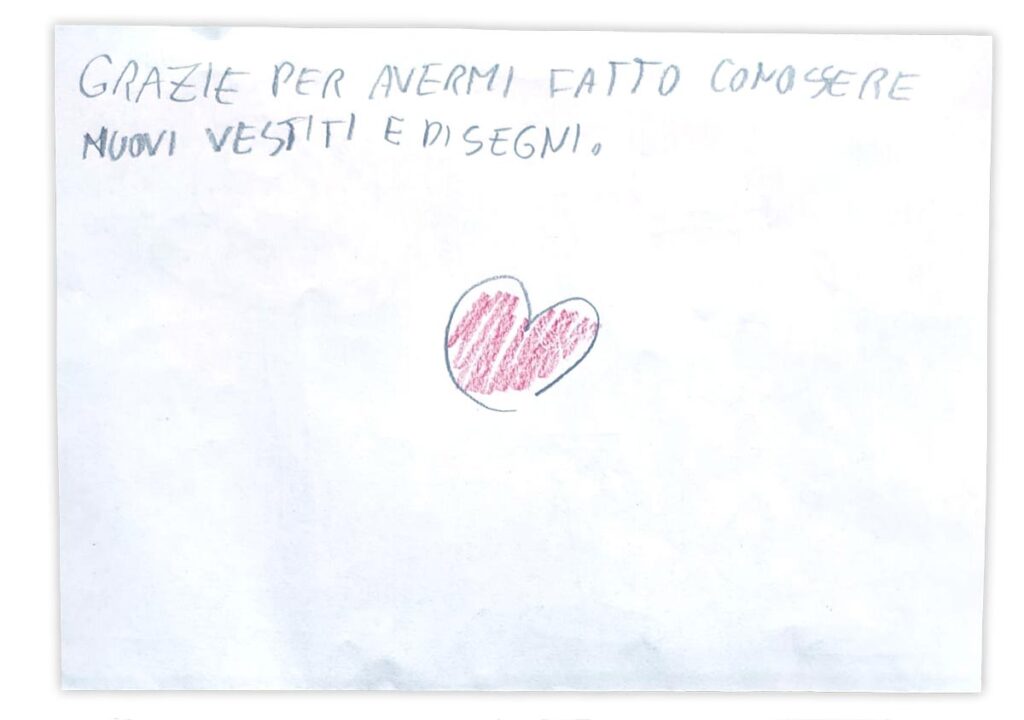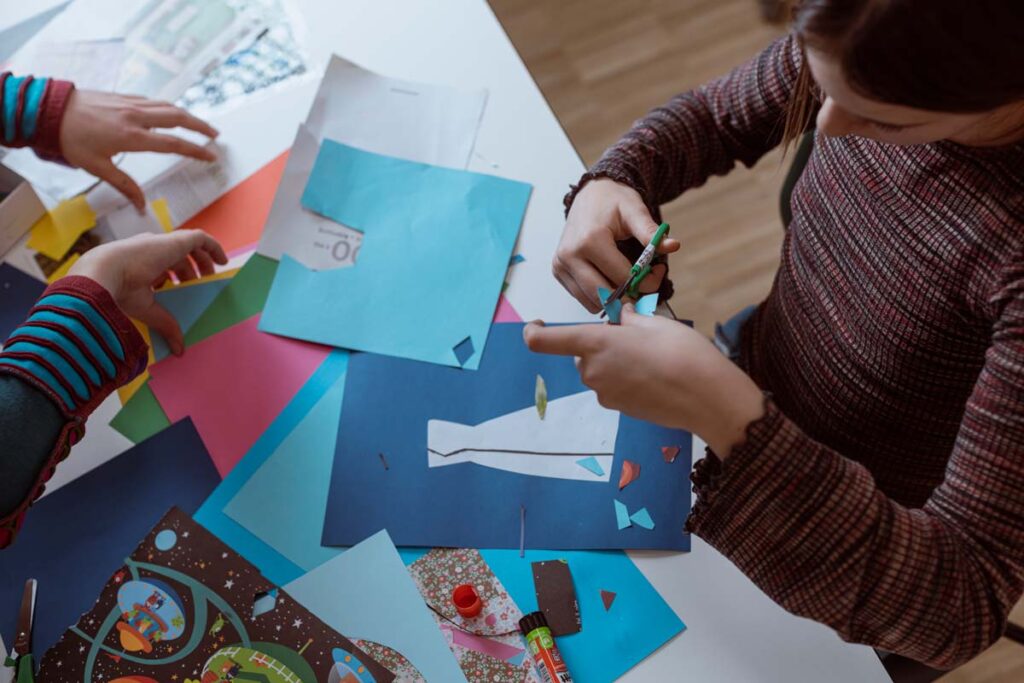
Creative thinking is not just for creative people. It is for everyone. We believe that every human being has the ability to create. ITS Arcademy is the closing of a circle: by showcasing the creative works we have been collecting for over 20 years we want to inspire visitors from primary school onwards to express their own creativity. Observation, imagination, and creation – these are key to all the activities developed by our Learning department. Inside our workshop, our team of experts develops activities that stimulate creative thinking and craft techniques to make, repair, reuse, and rediscover objects and materials. It’s about challenging your own perspective, discovering the joy of creating and, most importantly, having fun.


We talked to the team behind all our educational experiences, looking back on their first months of work since the opening of ITS Arcademy and at what the future holds.
Can you introduce what your team does and where at ITS Arcademy your activities take place?
The activities we develop are all based on the concept of awakening the curiosity of users to connect with their innate creativity through a playful, experimental, and sensorial approach. Our courses and workshops are inspired by the 14,758 creative projects in our unique ITS Collection. They are all examples of incredible and imaginative solutions to simple or complex problems.
Responsible creativity towards the environment and our collective resources is at the heart of the activities we develop, together with circularity and inclusion. The ultimate goal is to connect the ITS community and the local population through creativity. Over 10% of the floor space available at ITS Arcademy is dedicated to the Learning Area, with 2 main classrooms open to the public: a multipurpose room that hosts creative workshops, meetings, and conferences, and a Studio equipped with work tables, compact and industrial sewing machines, overlockers, embroiderers and a complete set of tailoring tools and materials.


Is there a connection between your work at ITS Arcademy and ITS Contest?
Yes, the collaboration with former ITS Contest finalists is a very exciting component of our activities. We welcome their ideas for courses and workshops and then work together to refine their proposals and include them in our catalogue of activities. Some of these collaborations are already operational, like those with Hazuki Katagai (ITS Contest 2016 and 2019), Francine Oeyen (2014), and Jesse Lee (2022). We also plan to have former Finalists joining us at ITS Arcademy through two different learning paths: weekend experiences (2-3 days) and Summer Schools, with in-depth sessions dedicated to broader issues affecting creativity, or the development of specific projects.
You’ve already been carrying out workshops with primary schools. Can you share some of the most interesting experiences you had interacting with kids, what was their response?
At first, we were hesitant because we didn’t know how children would perceive contemporary art and fashion and we were afraid that they might not be interested in our museum. In fact, we soon realised they are our best visitors! They are the first to understand the power behind portfolios and instinctively grasp the infinite ability of clothing to tell stories and create worlds. Each workshop includes a practical exercise where the kids can reflect on what they have seen and put it into practice in their own way. They are always so quick to connect the dots between the experience they have just lived and their own creative potential – there’s always tremendous excitement and we’re often blown away by the results, whether it is a collage or a structure made with wet moss and clay!
Which workshops are currently open to the general public, and what are you developing?
Our courses and workshops have a common starting point – the inspiration provided by the objects that constitute our ITS Collection. We don’t just stop at the manipulation of threads or fabrics, though. Our offer, for example, includes floral design workshops, natural dye tutorials and paper art labs. We’re currently working on ideas to make our Studio accessible to everyone, while continuing to offer upcycling and repair courses. Sustainability is something we feel strongly about, and for some it starts with teaching the foundations of forgotten skills that bring it home, like mending and repairing.


Are you planning to involve local artisans too?
Local artisans and artists have been involved in the design of our educational activities from the very beginning. We’re developing exciting collaborations with craftsmen who share our vision of a sustainable future, where traditional manufacturing techniques are preserved and celebrated.
What kind of experiences can schools access?
In addition to workshops, we offer cooperative learning sessions, lectures and talks led by professionals, heritage and talks led by professionals.
What is the best compliment you received, to date?
The best compliment is expressed creatively! We have quite a few drawings gifted by kids and inspired by their visit to ITS Arcademy. They literally make your heart melt!


What level of tailored experiences can you offer?
Tailored experiences are dedicated to fashion and design universities and academies, and high school or university students who want to further their studies independently. They can book in-depth study sessions of the ITS Collection, get assistance with the development of a portfolio and a collection, or dive deeper into conservation techniques and the challenges that a contemporary fashion collection presents.
Circularity, sustainability, inclusivity. These are fundamental aspects that are part of the manifesto of ITS Arcademy. How are you tackling them?
Most of the materials for our workshops have either been recycled or donated. We always try to build into every experience we design messages about the importance of taking care of nature and discovering the full potential of our territory. We explain the consequences of our choices as consumers, especially to children. We always keep it playful, we want to create awareness by developing a positive approach towards one another and the future.
In terms of circularity, it’s not just about materials, it’s about knowledge too: finalists come back to share their knowledge as teachers, tutors, or joining our Learning team. We’re also creating pathways dedicated to social cooperatives and organisations. The goal is simple, we want to make our museum and creativity accessible to all.


The workshops you offer are also strongly tied to the territory, is that right?
As mentioned before, the artisans we collaborate with are all based nearby. It may be a farm owner from the Trieste Karst region who cultivates plants from which they extract traditional natural dyes from our area, or floral designers working with flowers, mosses, and barks recovered in their local woods. Donated materials used in our workshops also come from locals.
Since Trieste has such a strong sailing tradition, individuals and companies have given us old sails and scraps of nautical material for creative and upcycling workshops. Our sponges come from a century-old natural sponge factory – the oldest in Europe, in fact. A playing cards and games manufacturer founded in 1868 donates printing tests for our paper art labs. A retired goldsmith gave us his workbenches…There’s a lot of local history in what we do.
How can anyone get in touch with you to plan activities?
It’s easy, just check out the Learning section on our website for more information. You can also write to us with your personalised requests. Our team will be happy to help!